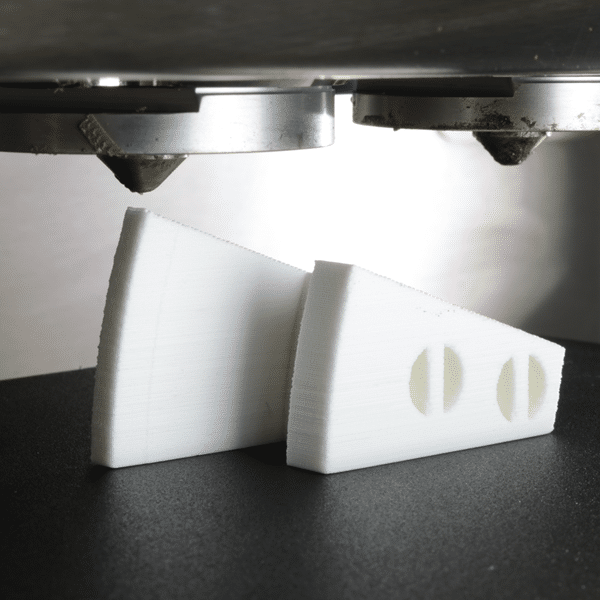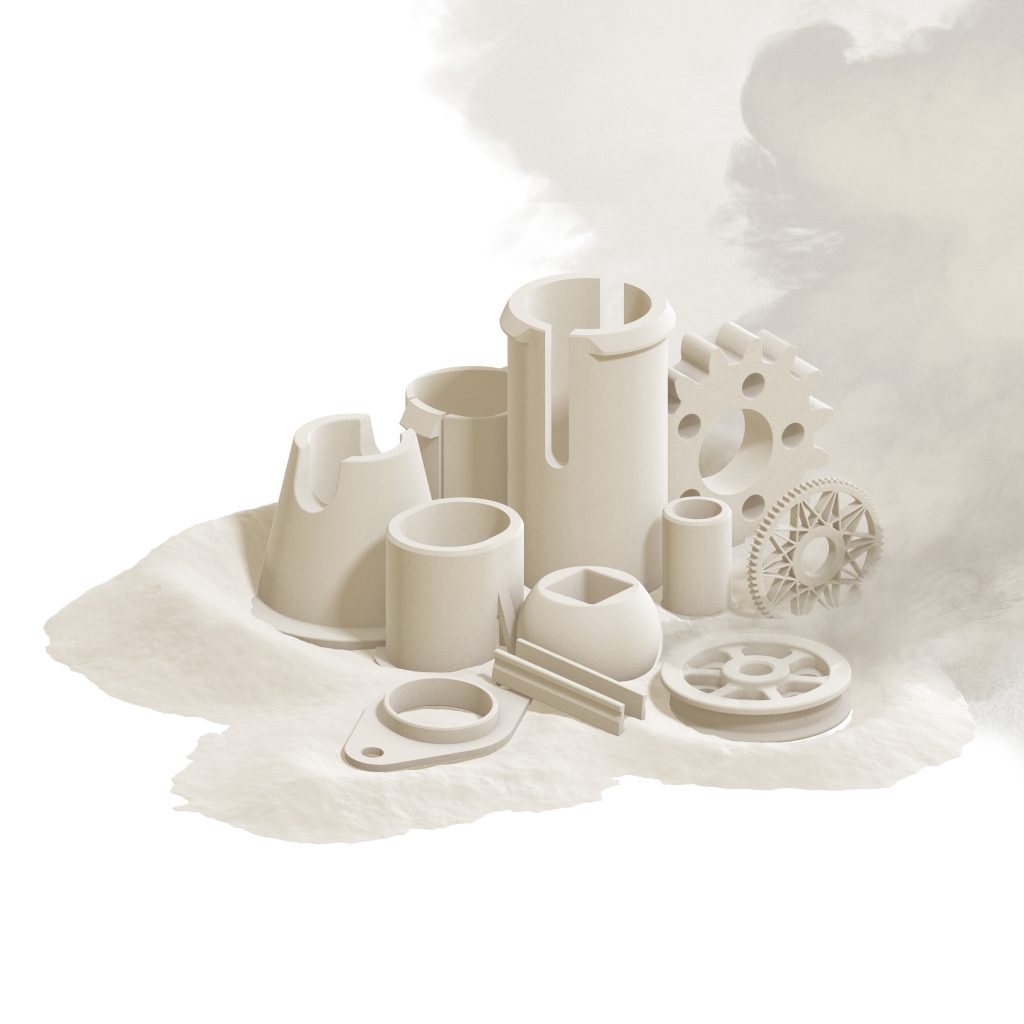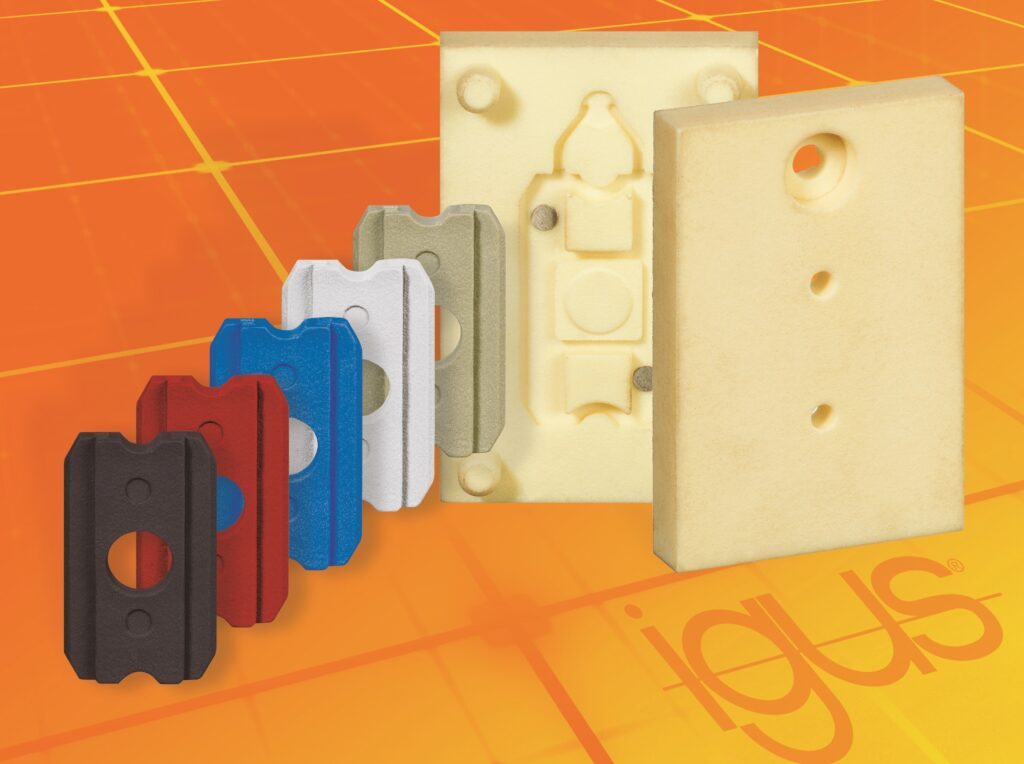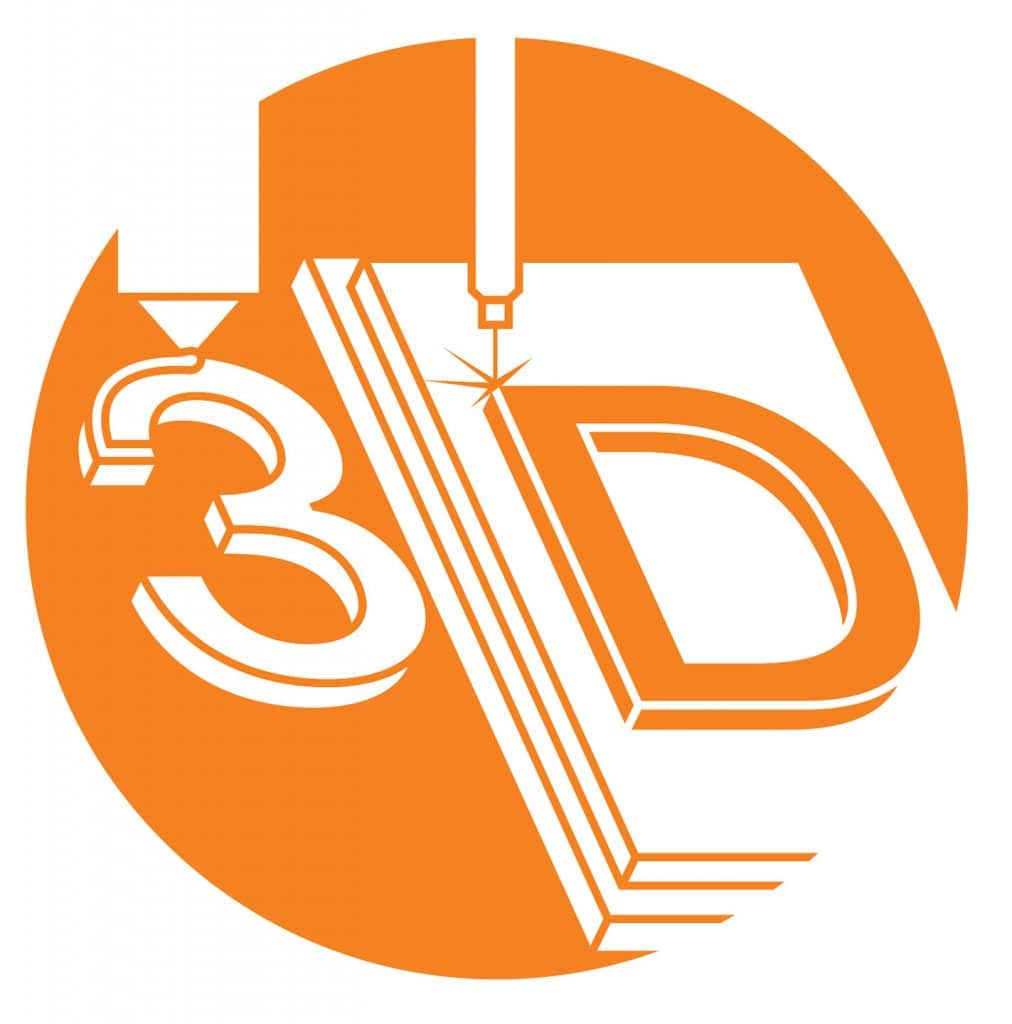Question: What different types of 3D printing techniques does igus® offer? Answer: igus® offers FDM [fused deposition modelling] and SLS [selective laser sintering] printed parts. We also use a polymer
SLS powder or metal option for printing tools, which is quite interesting. Question: Could you tell
me a bit more about FDM? Answer: The
drawbacks of FDM, if we can start with those, are that you can get
something called bird caging where
waste material accumulates between the key parts of your design. Another issue
is that it’s quite a time-consuming and fairly expensive process – you tend to produce
only between 1 and 10 parts at a time. Meanwhile,
the advantages are that we have a wide range of our typical igus® materials that are extruded to form FDM print filament. This allows us to be flexible to
solve many different applications that require special chemical, temperature or
food-approved requirements Question: Could you
tell me some more about SLS? Answer: With SLS, the inconveniences are that we only have a couple of
material options at the moment: the i3
and i6 variants. The machines are very expensive to buy for
a highly accurate part to be produced. However, the benefits are that the parts
can be made much quicker than with FDM; they are also much more cost-effective than FDM since there is very little waste in comparison. At igus®, we get very high results for
accuracy, wear rate and strength of the part. Question: Which option
would be best for printing parts for industrial use? Answer: To be
honest, I tend to specify the i3 SLS powder – it is a really strong all-rounder that suits many
different applications. Though made differently to the igus® J material, it is likened to this material
because it possesses 90% of the strength and wear rate of an iglidur® J lead screw nut, for example. You
can also obtain wear data from the design tool: if you print a bush you will be
able to calculate the life of this part. This option is also cheaper for large
parts as it takes a lot less time. Question: What sort of
industries do you print for in the i3
material? Answer: Pretty much
any! From concept work to OEM parts for machines; we are not just seeing an
interest from, say, food and packaging or automotive – it’s a really good
industry spread. This makes the future of 3D print sustainable, where in years to come traditional
manufacturing may not be viable in certain markets. Anything from aircraft
seats and pedal assemblies in cars to label applicators in food and packaging
companies. If you can think it, we can print it! Question: You mention
the future of 3D printing, what’s the future of igus® materials for SLS printing? Answer: We continue to develop new materials, not just for print but across our entire iglidur® range. We are working on two in particular, at the moment. The first has just launched: the A350 filament material – a high-temperature and food-approved material. Soon to be released is an ESD powder for SLS, it is an electrostatic dissipative material which has a dark grey / black colour. These continuous developments broaden our horizons in terms of target markets and what we can achieve for existing markets. The latter material is also great because we can use a dark coloured powder without resorting to dyeing the i3 powder where colours are an important feature in certain industries. Question: Contrary to
printing for industry, which is the best service for printing prototypes? Answer: Well, the
thing with 3D printing at the moment is that when printing
for machine building, all manufacturers are in a race to the bottom: people are
trying to make FDM machines as cheaply as possible. However, the industry
is now more like a spider diagram, where things are going off in all directions.
So, with precision material choice, you can see competition between metals,
proteins, polymers and even different woods. I believe that the hobbyist market
will still print in FDM, but for industry, I think SLS is still leading the way for both prototypes and production parts. Despite our technologies available
in the FDM materials, I think that SLS will be where the future is. Question: Will
additive manufacturing overtake traditional manufacturing? Why? Answer: Probably, yes, in some cases. Wastage, cost, set up, time, convenience… At the of the day, you could have a resident 3D printer on every industrial estate so that a part can be made within the time that it takes you to send them an email, walk around, and collect the part. That’s the future. In some
industries, it may be that the service vans that repair dishwashers and other
white goods could have machines on-board the trucks that are printing the parts
that they require as opposed to holding them ready as stock or returning the
next day. Question: Is 3D
printing, at the moment, meeting industry standards? Answer: Yes, well, accuracy
depends on the machine used to print it, and that is only going to improve. Question: Do you think
new regulations might be introduced to manufacturing methods around the world,
thus bringing about more need for 3D printing? Answer: Yes, maybe
cleaner and greener solutions. You could question what gases are released when
materials are moulded, extruded, printed … I think that’s something to watch
in the next 5 – 10 years. Recycling is a big thing: what happens at the end of
the life of a printed part? If you want to make a sleeved bush that’s, say,
30mm ID [inner diameter], unless you’re working with tube, you’ll have to core
out a lot of that material. Whereas, if you’re printing there is no coring,
you’re just working with powder that gets wasted but then reused. With
machining, this waste just gets thrown away. Question: You earlier mentioned
print to mould – what would igus® recommend between 3D print and print
to mould? Answer: Print to mould is a fantastic addition to our offering.
It enables us to mould real igus® polymers with reduced costs and lead
times compared to normal tooling, alongside little to no reduced quality. This
means we can produce fairly accurate parts at a low price in our very own
materials. Now, that is brilliant if you are working with particular chemicals,
temperatures, or you need particular ratings such as UL, V-0, FDA. At the
moment, the largest quantity we have had from a printed tool is 20,000 pieces;
when it started it was at around 250 pieces, so the results really speak for
themselves. There are very few companies that could think about achieving that,
let alone deliver it. As you’ll be aware, at igus® we deliver results not excuses, so
remember: if you can think it, we can print it. I’ve been Dean Aylott, and you’ve been great! Visit the website to find out more about igus® 3D printing techniques. Alternatively, contact our Product Manager Dean Aylott:  for any 3D Print enquiries. For more blogs relating to 3D print and 3D printing techniques click here. Seatpost Clamp,Titanium Seat Collar,bicycle seatpost clamps,titanium seat post clamp Bao Ji Titour Technology Co.,Ltd , https://www.cntitour.comQ & A with Dean Aylott: 3D Print Product Manager



